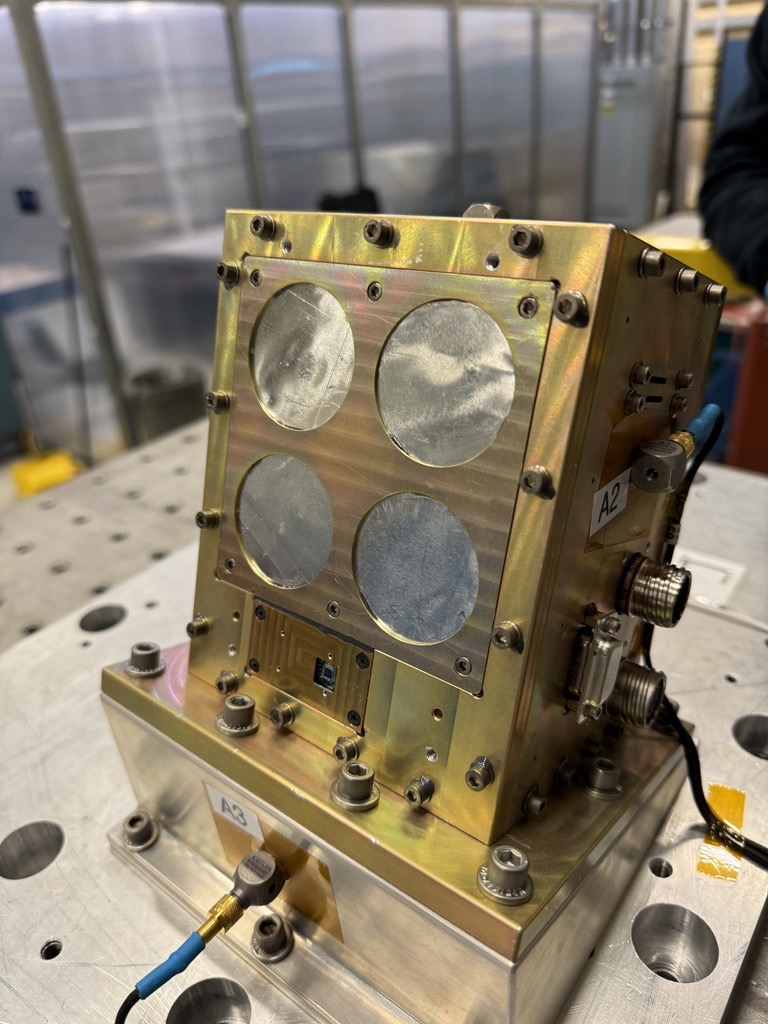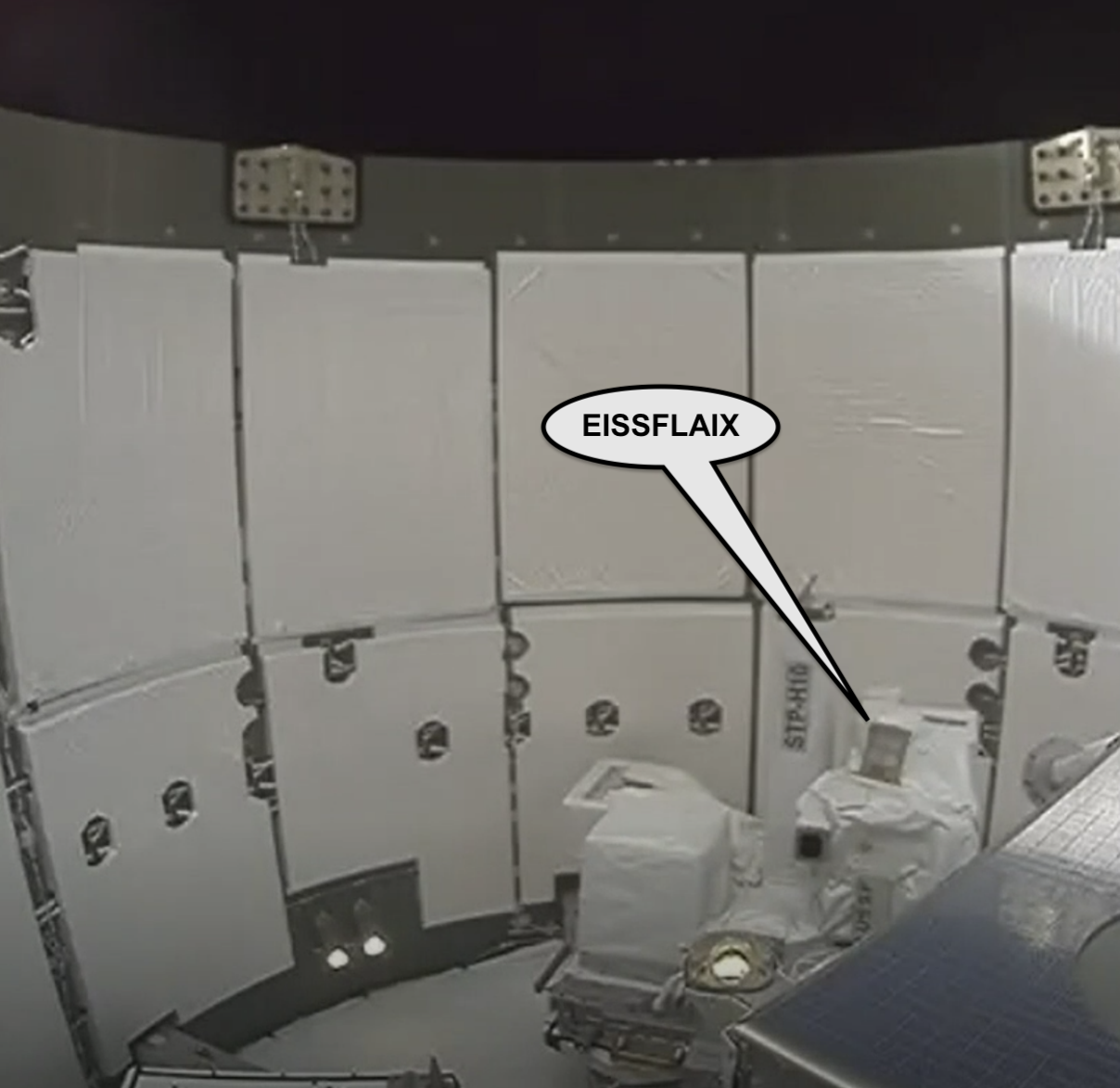SFXTI (EISSFLAIX)
Solar Flare X-ray Timing Investigation
EPSCoR ISS Solar FLare Acceleration Investigation through X-rays
Mission Overview
The Solar Flare X-ray Timing Investigation (SFXTI) is an external International Space Station (ISS) payload that wasdeveloped and designed by SSEL for the purpose of studying hard X-ray radiation during solar flares. The instrument was developed in conjunction with the Montana Space Grant Consortium (MSGC) for the EPSCoR program, which is where the secondary name EISSFLAIX (EPSCoR ISS Solar Flare Acceleration Investigation through X-rays) comes from.
The instrument contains four scintilator crystals paired with silicon photomultipliers (SiPM). The crystals interact with the hard x-rays and produce violet and ultraviolet light. This light is then measured and recorded by the electronics within the instrument and the data is sent back to earth via data streams from the ISS.
SFXTI records data at a much faster temporal rate then ever before. SFXTI will measure data 32 times a second which will help uncover sloar flare acceleration at unprecedented spatiotemporal scales.
The instument will be hosted on a platform developed by Aegis Aerospace called "Space Test Program - Houston 10" (STP-H10). This spacecraft contains other expirements and will be mounted on the outside of the ISS on the Columbus Module.
Status
The SFXTI payload successfully completed thermal and vibrational environmental testing in February of 2024. The instrument was delivered to Aegis Aerospace at Johnson Space Center soon after for integration with STP-H10.
 The completed SFXTI instrument installed on a vibration table at JSC
The completed SFXTI instrument installed on a vibration table at JSC
SFXTI and STP-H10 were launched from KSC via a SpaceX Falcon 9 rocket on April 21, 2025, alongside several tons of supplies for the ISS. The payload docked at the ISS the next day and installation of STP-H10 occurred on April 23, 2025. Shout out to NASA for providing us with the following media.

SFXTI seen inside of the SpaceX Dragon module after docking at the ISS.
Installation of STP-H10 on the ISS, note that SFXTI cannot be seen in the video.
SFXTI was powered on a few hours after the install and operations are ongoing. Data analysis will be available in the coming months.
Where in the world is SFXTI / EISSFLAIX right now?
